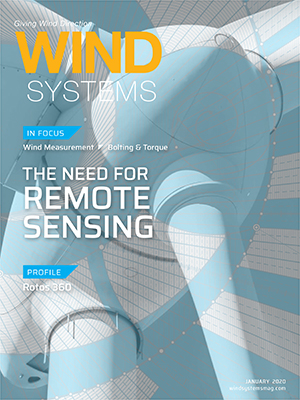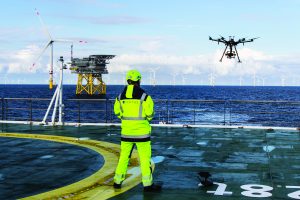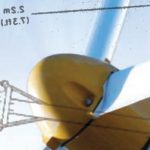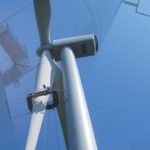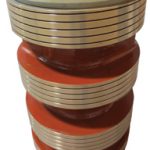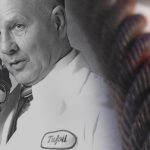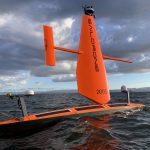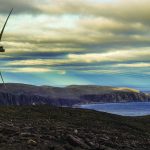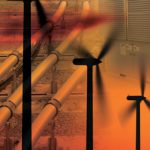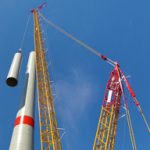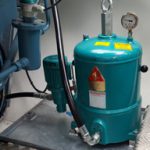Repairing turbine blades in the best conditions can be a difficult process, but when needed on turbines spinning miles off the coast, the difficulty level of those repairs increases significantly.
So, it’s especially fortuitous that Rotos 360, part of the UK’s leading marine services provider – James Fisher and Sons plc, specializes in offshore complex blade repairs.
“Probably 75 percent — maybe 80 percent depending on the year — of our work is offshore, covering all aspects of blade repair and inspection, but our specialty is complex blade repairs offshore using a platform, which is much more cost efficient than using rope access methods,” said Simon Sanderson, Rotos 360’s technical director. “For onshore wind-turbine repairs, we use ropes, platforms, and utes — in the States, you might call them cherry pickers perhaps.”
The nuts and bolts of what Rotos 360 does may revolve around blade repair, but the company’s goals go much deeper.
“When we set out, our key goal was to reduce the levelized cost of energy (LCOE),” Sanderson said. “This is to help bring the cost down. To do this, we have developed new-to-market techniques, particularly for offshore.”
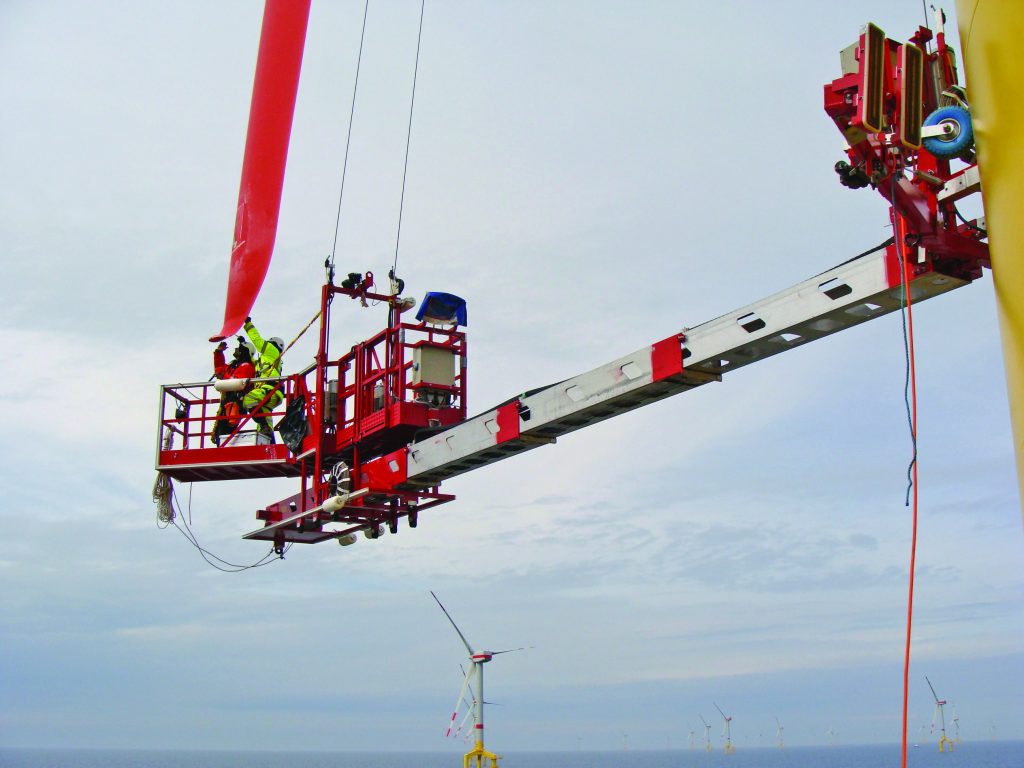
Reducing the LCOE
Working offshore can be difficult due to stronger winds, waves, and a colder, damper environment in general, according to Sanderson.
“We’ve reduced the levelized cost of energy, and the way we’ve done it is by increasing the window where we can conduct the work,” he said.
Part of that advancement has been to increase the amount of work possible during the offshore repair season, which typically runs from May to October, according to Sanderson. And during that timeframe, work can only be done about 50 percent of the time.
“The rest of the time you’re weathered off,” he said. “So, in that window of opportunity, we’ve tried to get as much work done as possible.”
With Rotos 360’s new processes, some of that work can now be performed at night when the wind speeds are lower, according to Sanderson.
“We’ve brought in techniques where you can repair blades at colder temperatures, higher humidity, and slightly higher wind speeds,” he said. “We’ve also worked out ways of transferring our guys to the turbines on bigger waves, and they can work longer hours.”
Repairing blades in the dark of night would seem to be a much more daunting task, but Sanderson said that’s actually not the case.
“The nighttime repairs are really just as easy,” he said. “It was going through all the health and safety, making sure that the lighting is good, just taking extra care with the working practices and then getting the method statements and risk assessments passed by the companies that we’ve worked for.”
And in some cases, night work actually makes repairs a little easier, according to Sanderson.
“If you’re grinding or sanding, a sharper shadow is cast by a single light than daylight,” he said. “So, some things you can actually see clearer. The other thing is, because we work two weeks on, two weeks off, obviously the nighttime shift gets you to the nighttime pattern where a worker sleeps through the day and works through the night. When we were conducting our research project, we looked at it, and offshore wind turbines are built 24 hours a day in two shifts. Our thought process was this: On a day when you’ve got perfect conditions, why waste those 12 hours of night?”
Carving out more time per day for repairs is a valued part of Rotos 360’s arsenal, but the company also implements some innovative technology to decrease the actual repair time, according to Sanderson.
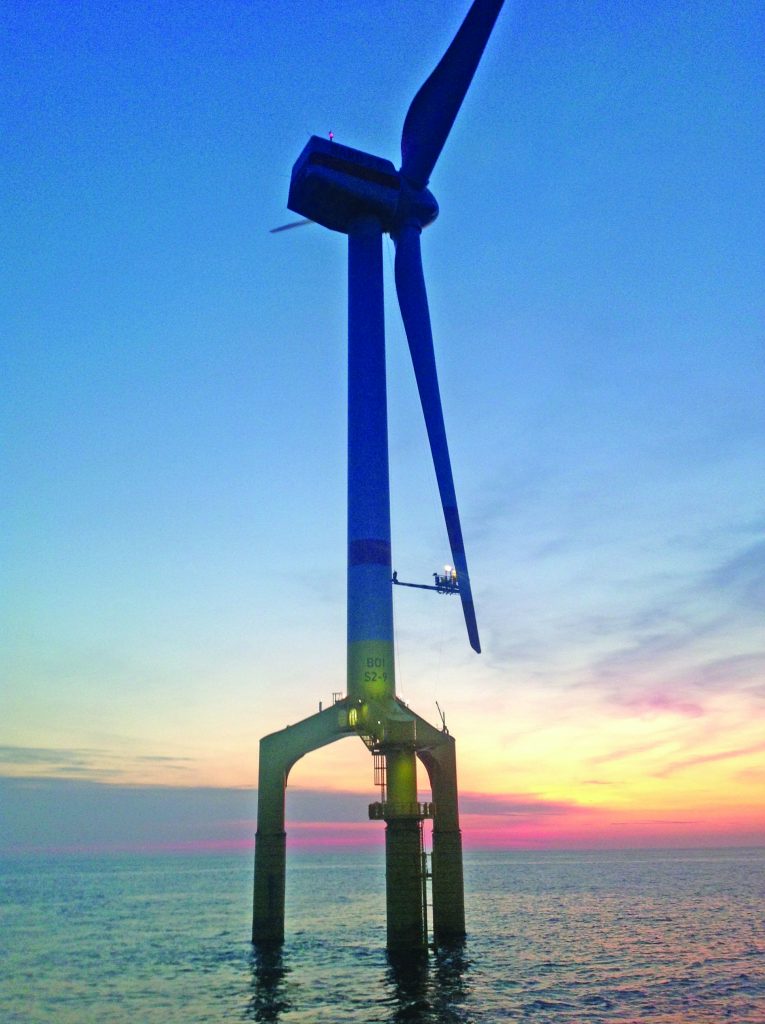
RENUVO UV Cure Blade Repair
“We’ve got two systems that we’re using: One is the RENUVO UV cure blade repair method,” he said.
With standard blade repair, a layer of propoxy is used, which takes about an hour to secure, and then it’s cured with heater blankets for another five or six hours, according to Sanderson.
“With the UV cured repairs, it’s similar to going to the dentist; you cure it with a UV lamp, which you use a little bit like a paintbrush,” he said. “And with 10 passes of the lamp, it’s completely cured.”
A one-square-meter repair can be cured in 10 minutes, saving vast amounts of time, according to Sanderson.
“Time offshore is extremely expensive,” he said. “It’s probably at least a factor of 10 more expensive than conducting repairs onshore. So, this is very important.”
Not only can the repairs be done quicker, but they can also be done in extremely cold environments, according to Sanderson.
“With the UV, you can conduct the repairs down to 5 Centigrade,” he said. “Normally with the resins, you can only use it down to 15 Centigrade. The other thing is the humidity. Normally you’re limited to 70 percent humidity. With the UV cured repair system, we can cure in up to 90 percent humidity.”
The Blade Bubble
Yet another tool that Rotos 360 employs is its blade bubble, which is basically a mini, portable habitat, according to Sanderson. It was originally developed for Siemens Gamesa to meet its renewable energy goals.
“It’s like a little mini tent, a bit like the incubator that you use for babies,” he said. “It’s made from sail material; it’s transparent; it’s got a deep cross-section. And then, if it’s too cold — if it’s say 10 Centigrade and 90 percent humidity — you put the blade bubble over the top, and it’s got a little box, which has the heater and controller in it. It has a thermocouple cable that goes onto the blade, which measures the temperature. Within five or 10 minutes, it will take the temperature inside the bubble up to whatever you set it.”
The blade bubble has a zipper on the side that allows repair materials in. It also has two or more hand holes, according to Sanderson.
“The technicians put their hand through the hand hole and conduct the blade repair in this mini habitat, looking through the transparent blade bubble, which is over the top,” he said. “The latest version is waterproof as well, and you can set it to be any temperature you like. At 15 Centigrade, the resin may take one to two hours to cure. If you set it at 25 Centigrade, then the resin sets in maybe 20 or 30 minutes instead. But you still then have to remove the blade bubble and cure it out with a heated blanket over the top in the conventional way.”
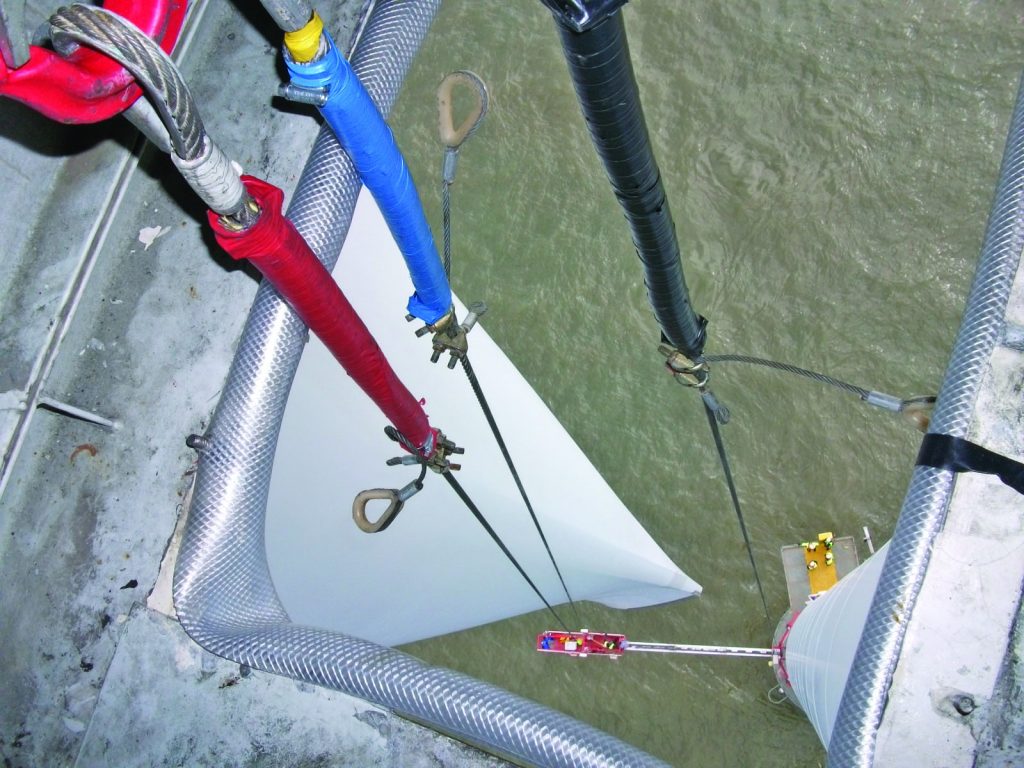
Everlasting Leading Edge Protection
In addition to that, Sanderson said Rotos 360 is partnering with PolyTech on a product called ‘ELLE’, which stands for Everlasting Leading Edge protection. ELLE — used for both offshore and onshore turbines — consists of one-meter sections that glue over the leading edge of the blade to protect it.
“First, we come along, we repair the blade, get it back to its original state, and then we apply maybe somewhere between three and 10 of these one-meter sections on each blade,” he said.
Depending on the turbine’s location, the ELLE process is guaranteed for about five years, but Sanderson said it is expected to last even longer, possibly the lifetime of the blade.
And with offshore turbines, Rotos 360 is using platforms, a 24-hour work schedule, and the SOV, according to Sanderson. The SOV is a 50-meter vessel that can accommodate 40 workers and four platforms.
“We can work on four locations at any one time,” he said. “The SOV should be cheaper than a jackup, although there are some very cheap jackups at the moment. But we don’t run the risk of damaging the blade, taking them all off or putting them on again, or getting the jackup stuck into the seabed, which happens on quite a few occasions.”
Approaching a Customer’s Challenges
Rotos 360’s customers come to the company with a myriad of problems, and Sanderson points out that Rotos approaches each one on a case-by-case basis.
“It depends what type of problem it is, because there are many problems,” he said. “As an example, Siemens Gamesa came to us with the problem of the working environment and wanted a habitat to conduct the repairs in. We just look at all the variables. We’ve got a history of conducting research in renewable energy, so we just take it from fundamental principles.”
And if need be, Rotos 360 will bring in consultants, but most of the time, in-house experts are fully capable of handling the job, according to Sanderson.
“We’ll look at maybe one or two different approaches, make some prototypes, and possibly go to specialist companies to help produce what we’re looking at,” he said. “Sometimes we produce it ourselves, because we’ve got the experience in producing various equipment.
We’ve got the tools and the workshops to do this. We also have tech facilities. We’ll have a five-meter section of blade suspended from the ceiling, so we can test these things inside a warehouse to just get the development program going quickly.”
Once the solution is developed, validation tests and optimization are performed at wind farms, and then, finally, risk assessments and method statements are developed with the client, according to Sanderson.
Working with a Safety-Conscious Industry
“The wind industry is very, very safety conscious,” he said. “The manufacturers of the turbine or the owner of the wind farm will all have their health and safety people go over every aspect and ask us a lot of questions before we take it to a site. And then when we finally do take it out there for the validation, everyone takes a lot of care because this is the first time something new is being done to make sure, one, that it happens safely, but then also to analyze it. We’ll have one person just analyzing it as it’s done, just to see whether there’s any unseen risk that’s being taken on the validation.”
Rotos 360 has made great strides in the blade repair business since it began as a research project in 2013 where it eventually grew into the company’s first offshore wind farm repair in June 2014 at BARD 1, the farthest offshore wind farm in the world, according to Sanderson. The BARD 1 work involved nighttime repair for the first time offshore, as well as implementing the RENUVO UV Blade Repair system.
Rotos 360 started as a joint venture between Emerald Energy and Safety Boat Services, an offshore vessel supply company.
In 2016, Rotos 360 was bought out by James Fisher and Sons plc, a large group that supports a number of global sectors, including construction, oil and gas, nuclear, defense, and renewables, according to Sanderson.
“We have a lot of sister companies, most notably James Fisher Marine Services (JFMS), supporting the renewables sector or otherwise, that we can combine offerings with and take learnings from,” he said. “For instance, for NDT inspection, we talk to James Fisher NDT who’ve got experts in various types of fault inspection or radiography, that type of thing.”
Looking to the Future
As the wind industry continues to evolve, Sanderson said Rotos 360 plans to expand into other innovative areas with the assistance of its sister companies.
“We aim to be at the cutting edge of the technology, and if we’re not at the cutting edge of the technologies ourselves, we aim to partner with people who are,” he said.
One of those areas is using robotics for inspections and repair, according to Sanderson.
“At the moment, we’re talking to a company that is using infrared thermography on drones,” he said. “Not only can you take photographs of the surface of the blade, but you can look down inside the structure of the blade using infrared. And then on the other side that, we really want to integrate our blade repair services with the rest of the operations and maintenance of an offshore wind farm.”
That would involve JFMS offering five-year operation and maintenance packages for the offshore wind industry, and then Rotos 360 would do all of the wind turbine-related operation and maintenance, tying in different services at the same time, according to Sanderson.
“For instance, if we’re on an offshore wind farm and we’re conducting blade repair or inspection, at the same time the electricians could be looking at the high-voltage circuit and testing those, or people could be doing statutory inspections on the lifts and attachment points,” he said. “Another service JFMS offers is gearbox oil exchanges. We could tie this all in, so we’d have larger vessels going out conducting complete operation and maintenance packages at the same time to help reduce the cost.”
But, in the end, all the work that Rotos 360 and its sister companies does always circles back to the relationship with the customer.
“We become one team with our clients and their clients,” Sanderson said. “We’re always aiming to improve.”



















